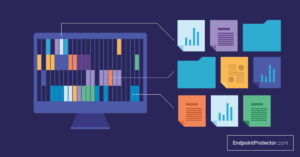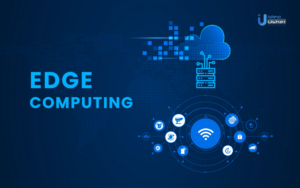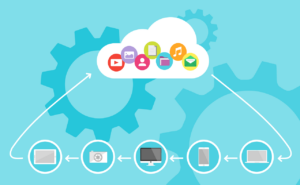Gain insights into your distributed systems with Cloud-Native Observability: Monitoring and Troubleshooting made easy.
Cloud-native observability refers to the practice of monitoring and troubleshooting distributed systems that are built using cloud-native technologies and architectures. As organizations increasingly adopt cloud-native approaches, such as containerization and microservices, the need for effective observability becomes crucial. This involves gaining insights into the behavior and performance of these complex systems, identifying issues, and troubleshooting them in real-time. Cloud-native observability encompasses various monitoring and troubleshooting techniques, including logging, metrics, tracing, and distributed tracing, to provide a comprehensive view of the system’s health and performance. By implementing robust observability practices, organizations can ensure the reliability, scalability, and efficiency of their distributed systems in the cloud-native environment.
The Importance of Cloud-Native Observability in Monitoring Distributed Systems
The Importance of Cloud-Native Observability in Monitoring Distributed Systems
In today’s digital landscape, businesses are increasingly relying on distributed systems to power their operations. These systems, which consist of multiple interconnected components, offer scalability, flexibility, and resilience. However, they also present unique challenges when it comes to monitoring and troubleshooting.
Traditional monitoring tools and techniques are often ill-equipped to handle the complexities of distributed systems. These tools were designed for monolithic architectures, where all components were tightly coupled and ran on a single server. In contrast, distributed systems are highly dynamic, with components running on different servers, in different locations, and even in different cloud providers.
This is where cloud-native observability comes into play. Cloud-native observability is a set of practices and tools that enable organizations to gain insights into the behavior and performance of their distributed systems. It provides a holistic view of the system, allowing operators to understand how different components interact and identify potential bottlenecks or issues.
One of the key benefits of cloud-native observability is its ability to provide real-time monitoring. Traditional monitoring tools often rely on periodic sampling, which means that operators only get a snapshot of the system’s performance at specific intervals. In contrast, cloud-native observability tools collect and analyze data in real-time, providing operators with up-to-date information about the system’s health and performance.
Another important aspect of cloud-native observability is its focus on metrics, logs, and traces. Metrics provide quantitative data about the system’s behavior, such as response times, error rates, or resource utilization. Logs, on the other hand, capture detailed information about specific events or transactions, allowing operators to trace the flow of data through the system. Traces provide a high-level view of the system’s behavior, showing how different components interact and communicate with each other.
By leveraging these different types of data, cloud-native observability enables operators to quickly identify and troubleshoot issues. For example, if a component is experiencing high latency, operators can use metrics to pinpoint the source of the problem and logs to understand what went wrong. They can also use traces to visualize the flow of data and identify potential bottlenecks or performance issues.
Cloud-native observability also plays a crucial role in ensuring the reliability and resilience of distributed systems. By monitoring key metrics and analyzing logs and traces, operators can proactively identify potential issues before they impact the system’s performance. They can also use this data to optimize the system’s configuration and resource allocation, ensuring that it can handle peak loads and unexpected failures.
In conclusion, cloud-native observability is essential for monitoring and troubleshooting distributed systems. Traditional monitoring tools are ill-suited to handle the complexities of these systems, which consist of multiple interconnected components running on different servers and locations. Cloud-native observability provides a holistic view of the system, enabling operators to gain real-time insights into its behavior and performance. By leveraging metrics, logs, and traces, operators can quickly identify and troubleshoot issues, ensuring the reliability and resilience of the system. In today’s digital landscape, where distributed systems are becoming the norm, organizations cannot afford to overlook the importance of cloud-native observability.
Best Practices for Troubleshooting Distributed Systems in a Cloud-Native Environment
Cloud-Native Observability: Monitoring and Troubleshooting Distributed Systems
In today’s digital landscape, businesses are increasingly adopting cloud-native architectures to leverage the scalability and flexibility offered by cloud computing. However, with the adoption of distributed systems in a cloud-native environment comes the challenge of monitoring and troubleshooting these complex systems. In this article, we will explore some best practices for troubleshooting distributed systems in a cloud-native environment, with a focus on observability.
Observability is the ability to understand the internal state of a system based on its external outputs. In the context of distributed systems, observability plays a crucial role in identifying and resolving issues that may arise. To achieve observability, it is essential to have a comprehensive monitoring strategy in place.
First and foremost, it is important to establish clear monitoring objectives. This involves identifying the key metrics and indicators that need to be monitored to ensure the smooth functioning of the distributed system. These metrics can include response times, error rates, resource utilization, and other relevant performance indicators. By defining these objectives, organizations can focus their monitoring efforts on the most critical aspects of their distributed systems.
Once the monitoring objectives are established, the next step is to select the appropriate monitoring tools and technologies. In a cloud-native environment, there are several options available, ranging from open-source solutions to commercial offerings. It is crucial to choose a monitoring solution that aligns with the specific requirements of the distributed system and provides the necessary visibility into its components.
In addition to selecting the right monitoring tools, it is equally important to define meaningful alerts and thresholds. Alerts should be configured to notify the relevant stakeholders whenever a predefined threshold is breached. These thresholds can be based on predefined performance benchmarks or dynamically adjusted based on historical data. By setting up meaningful alerts, organizations can proactively identify and address potential issues before they impact the end-users.
Furthermore, it is essential to establish a centralized logging and tracing mechanism. Logging allows organizations to capture and analyze the system’s events and activities, providing valuable insights into its behavior. Tracing, on the other hand, enables the tracking of requests as they flow through the distributed system, helping to identify bottlenecks and performance issues. By leveraging logging and tracing, organizations can gain a holistic view of their distributed systems and troubleshoot issues more effectively.
In a cloud-native environment, where microservices are often deployed and scaled independently, it is crucial to adopt a distributed tracing approach. Distributed tracing allows organizations to trace requests across multiple services, providing end-to-end visibility into the system’s behavior. This can be achieved by instrumenting the services with tracing libraries and aggregating the trace data in a centralized system.
Finally, it is important to establish a culture of collaboration and continuous improvement. Troubleshooting distributed systems in a cloud-native environment requires cross-functional collaboration between development, operations, and other stakeholders. By fostering a culture of collaboration, organizations can leverage the collective expertise and experience to identify and resolve issues more efficiently. Additionally, organizations should continuously evaluate and refine their monitoring strategy to adapt to the evolving needs of their distributed systems.
In conclusion, monitoring and troubleshooting distributed systems in a cloud-native environment require a comprehensive observability strategy. By establishing clear monitoring objectives, selecting the right tools, defining meaningful alerts, implementing centralized logging and tracing mechanisms, adopting distributed tracing, and fostering a culture of collaboration, organizations can effectively monitor and troubleshoot their distributed systems. With observability at the core, businesses can ensure the smooth functioning of their cloud-native architectures and deliver a seamless experience to their end-users.
How to Implement Effective Cloud-Native Observability for Distributed Systems
Cloud-Native Observability: Monitoring and Troubleshooting Distributed Systems
In today’s digital landscape, distributed systems have become the backbone of many organizations. These systems, which consist of multiple interconnected components, allow for scalability, fault tolerance, and high availability. However, managing and troubleshooting these complex systems can be a daunting task. That’s where cloud-native observability comes into play.
Cloud-native observability is a set of practices and tools that enable organizations to gain insights into the behavior and performance of their distributed systems. It involves monitoring various metrics, collecting logs, and tracing requests as they flow through the system. By implementing effective cloud-native observability, organizations can proactively identify and resolve issues, ensuring the smooth operation of their distributed systems.
To implement effective cloud-native observability, organizations need to consider several key factors. First and foremost, they need to define the objectives of their observability strategy. What are the specific metrics and logs they want to monitor? What are the critical components of their distributed system that require close attention? By clearly defining these objectives, organizations can focus their efforts on the most important aspects of their system.
Once the objectives are defined, organizations need to select the right tools for monitoring and troubleshooting their distributed systems. There are several popular tools available in the market, such as Prometheus, Grafana, and Jaeger, that provide comprehensive observability capabilities. These tools allow organizations to collect and visualize metrics, create dashboards, and trace requests across different components of their system.
In addition to selecting the right tools, organizations also need to establish a robust monitoring infrastructure. This involves setting up monitoring agents or exporters on each component of the distributed system to collect relevant metrics and logs. These agents then send the collected data to a centralized monitoring platform, where it can be analyzed and visualized. By having a centralized monitoring infrastructure, organizations can easily identify performance bottlenecks and troubleshoot issues.
Another important aspect of implementing effective cloud-native observability is the ability to correlate data from different sources. Distributed systems often generate a vast amount of data, including metrics, logs, and traces. To make sense of this data, organizations need to be able to correlate it and identify patterns or anomalies. This can be achieved by using tools that provide advanced analytics capabilities, such as anomaly detection algorithms or machine learning models.
Furthermore, organizations should consider implementing automated alerting and notification systems as part of their observability strategy. These systems can proactively notify the relevant teams or individuals when certain metrics or logs exceed predefined thresholds. By receiving timely alerts, organizations can quickly respond to potential issues and minimize downtime.
Lastly, organizations should continuously iterate and improve their observability strategy. As distributed systems evolve and new components are added, the monitoring and troubleshooting requirements may change. Therefore, it is crucial to regularly review and update the observability strategy to ensure it remains effective.
In conclusion, implementing effective cloud-native observability is essential for monitoring and troubleshooting distributed systems. By defining clear objectives, selecting the right tools, establishing a robust monitoring infrastructure, correlating data from different sources, implementing automated alerting systems, and continuously iterating the observability strategy, organizations can gain valuable insights into the behavior and performance of their distributed systems. This, in turn, enables them to proactively identify and resolve issues, ensuring the smooth operation of their systems and delivering a seamless experience to their users.In conclusion, cloud-native observability is crucial for effectively monitoring and troubleshooting distributed systems. It provides insights into the performance, health, and behavior of applications and infrastructure in a cloud-native environment. By leveraging various observability tools and techniques, organizations can gain real-time visibility, detect anomalies, and proactively address issues to ensure optimal system performance and reliability. Cloud-native observability plays a vital role in enabling efficient troubleshooting, enhancing system resilience, and improving overall operational efficiency in distributed systems.















